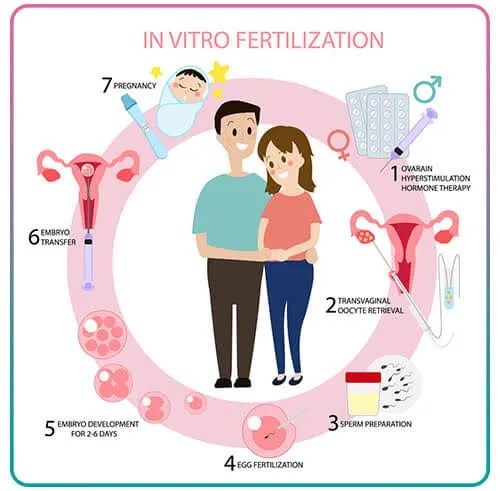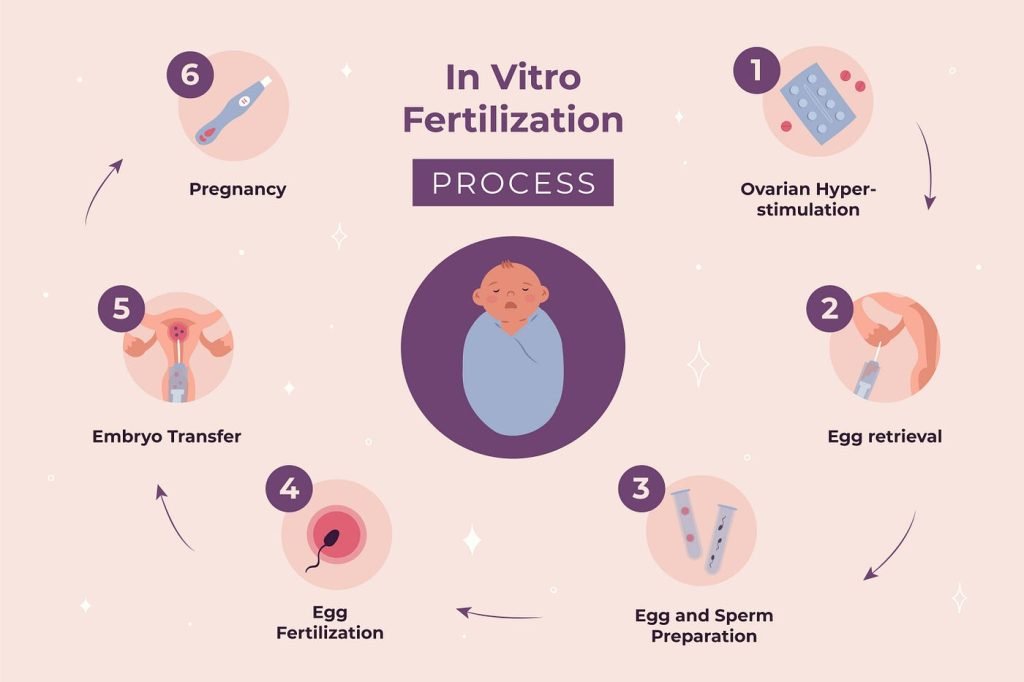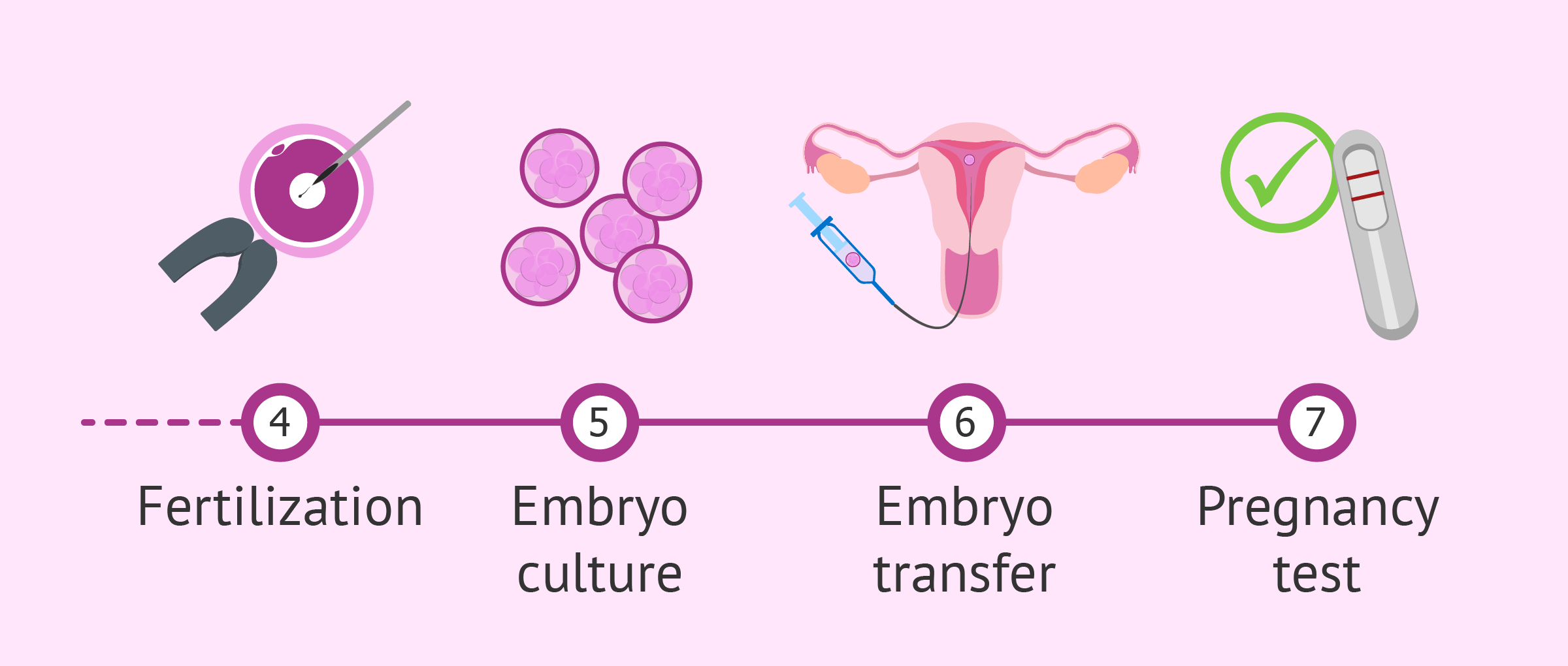What Is the IVF Process? Your Complete Guide to In Vitro Fertilization
Starting a family can feel like a dream come true, but for some, it’s not as simple as it seems. If you’ve been trying to get pregnant without success, you might have heard about in vitro fertilization, or IVF. It’s a process that’s helped millions of people around the world become parents, and it’s more common than you might think—about 2.5% of babies born in the U.S. today come from IVF. But what exactly is it? How does it work? And what should you expect if you’re considering it?
This guide is here to walk you through every step of the IVF process in a way that’s easy to understand. Whether you’re just curious or seriously thinking about it, you’ll find answers to the big questions, plus some practical tips and fresh insights you won’t see everywhere else. Let’s dive in and explore what IVF is all about!
Why IVF Might Be the Answer for You
IVF is a type of fertility treatment where doctors help create a baby outside the body before placing it into the womb. It’s often called a “test-tube baby” process, though it happens in a lab dish, not a tube! The idea is simple: if nature isn’t cooperating, science steps in to give things a boost.
People turn to IVF for all kinds of reasons. Maybe the fallopian tubes, which carry eggs to the uterus, are blocked. Or perhaps there’s an issue with sperm count or quality. Sometimes, it’s just a mystery why pregnancy isn’t happening. IVF can also help same-sex couples, single parents, or people who want to avoid passing on certain genetic conditions. Whatever the situation, it’s a tool that opens doors when others stay closed.
Here’s a quick look at who might consider IVF:
- Women with damaged or missing fallopian tubes.
- Men with low sperm count or poor sperm movement.
- Couples facing unexplained infertility after years of trying.
- Anyone using donor eggs, sperm, or a surrogate.
What’s cool about IVF is how much it’s evolved since the first baby, Louise Brown, was born in 1978. Today, nearly 10 million babies have come into the world thanks to this technology. And with new advances, it’s becoming more accessible and successful than ever.
How the IVF Process Works: A Step-by-Step Breakdown
IVF isn’t a one-day thing—it’s a journey that takes about 4 to 6 weeks per cycle. Each step builds on the last, and while it can feel overwhelming, knowing what’s ahead makes it less scary. Here’s how it all unfolds, broken down into five main stages.
Step 1: Boosting Egg Production
Normally, your body releases one egg a month. IVF changes that by using medicines to tell your ovaries to make several eggs at once. This step, called ovarian stimulation, usually lasts 8 to 14 days.
- What happens: You’ll take hormone shots or pills to kick your ovaries into gear. Doctors keep an eye on things with ultrasounds (to see the eggs growing) and blood tests (to check hormone levels).
- Why it matters: More eggs mean more chances to create healthy embryos.
- Pro tip: Ask your doctor about “mini IVF” if you’re worried about too many meds—it uses lower doses and might feel gentler.
A 2023 study from the American Society for Reproductive Medicine found that tweaking these meds based on your age and hormone levels can boost success rates by up to 15%. So, it’s not one-size-fits-all—your plan should fit you.
Step 2: Collecting the Eggs
Once your eggs are ready (usually when they’re in follicles about 14-20 millimeters big), it’s time to get them out. This is called egg retrieval, and it’s a quick procedure done under light sedation.
- What happens: A doctor uses a thin needle guided by ultrasound to pull the eggs from your ovaries through your vagina. It takes about 20 minutes, and you’ll rest afterward.
- How it feels: Most people say it’s like mild cramps—uncomfortable but not awful.
- Fun fact: On average, doctors collect 8-15 eggs, though it varies.
Afterward, you might feel bloated or sore for a day or two. Rest up, sip water, and you’ll be back to normal soon.
Step 3: Fertilizing the Eggs
Now the magic happens in the lab. The eggs meet the sperm, and with a little help, they turn into embryos.
- What happens: Sperm (from a partner or donor) is mixed with the eggs in a dish. If sperm quality is low, a technique called ICSI (intracytoplasmic sperm injection) injects one sperm directly into each egg.
- Timeline: Fertilization takes a few hours, and embryos grow for 3-6 days.
- Science bit: About 60-70% of eggs fertilize successfully, per the Mayo Clinic.
This is where patience comes in. Lab experts watch the embryos closely, picking the strongest ones for the next step.
Step 4: Transferring the Embryo
Time to put the embryo (or embryos) into the uterus! This step, called embryo transfer, is simple and usually painless.
- What happens: A doctor slides a thin tube through your cervix and places the embryo in your uterus. It takes 5-10 minutes, and you’re awake the whole time.
- Fresh vs. frozen: Some use “fresh” embryos right away; others freeze them for later (frozen transfers often have higher success rates—more on that later).
- Aftercare: Rest for the day, then ease back into life. You might take progesterone to help the embryo stick.
Implantation happens 6-10 days later if all goes well. That’s when the embryo attaches to your uterus lining, starting a pregnancy.
Step 5: Waiting for the Big News
The hardest part? Waiting. About two weeks after the transfer, you’ll take a pregnancy test.
- What happens: A blood test checks for hCG, the pregnancy hormone. If it’s positive, you’re pregnant!
- Success odds: For women under 35, about 40-50% of cycles lead to a live birth, per the CDC. Older age lowers the odds, but donor eggs can help.
- Tip: Stay busy—plan a fun distraction like a movie night to keep your mind off the wait.
If it works, congrats! If not, many try again—each cycle teaches doctors more about what your body needs.
What Makes IVF Success Rates Tick?
Success isn’t guaranteed with IVF, and that’s okay—it’s a process, not a promise. But what affects your chances? Let’s break it down.
Age Is a Big Player
Your age matters a lot. Younger eggs are healthier and more likely to turn into babies. Here’s a snapshot from 2023 CDC data:
- Under 35: 48% live birth rate per cycle.
- 35-37: 34%.
- 38-40: 22%.
- Over 40: 8% (unless using donor eggs, which jumps it back up).
If you’re over 40, don’t lose hope—donor eggs or frozen embryos from your younger years can make a huge difference.
Lifestyle Counts Too
Your habits play a role. Research from Reproductive Biology and Endocrinology (2022) shows:
- Smoking cuts success by 20%.
- Being overweight or underweight can drop rates by 10-15%.
- Stress doesn’t kill IVF, but it can make the ride tougher.
✔️ Do this: Eat balanced meals, walk 30 minutes a day, and cut back on caffeine.
❌ Skip this: Crash diets or chain-smoking—your body needs calm and fuel.
Frozen vs. Fresh Embryos
Here’s something new: frozen embryo transfers are outpacing fresh ones. A 2024 study in Fertility and Sterility found frozen transfers have a 5-10% higher success rate. Why? Freezing lets doctors time the transfer perfectly with your uterus lining, and it avoids overstimulation risks.

The Emotional Side of IVF: What No One Tells You
IVF isn’t just about shots and lab dishes—it’s a rollercoaster of feelings. You might feel hopeful one day, crushed the next. And that’s normal.
The Stress Factor
A 2023 survey by Resolve: The National Infertility Association found 70% of IVF patients felt anxious during treatment. The waiting, the costs, the “what ifs”—it adds up.
- Real story: Sarah, a 34-year-old teacher, said, “The two-week wait was torture. I’d check every twinge, hoping it was a sign.”
- Fix it: Try journaling or talking to a friend who gets it. Online support groups on X are buzzing with people sharing tips—search “IVF journey” and join the chat.
When It Doesn’t Work
Not every cycle ends in a baby. About 1 in 3 women need multiple tries, per Yale Medicine. If it fails, give yourself grace—it’s not your fault.
- Next step: Ask your doctor what went wrong. Maybe it’s a tweak in meds or timing. Data from 2024 shows second cycles often succeed where first ones don’t.
Costs and Coverage: What’s the Price Tag?
IVF isn’t cheap, but it’s not impossible either. Here’s the scoop.
Breaking Down the Bill
A single cycle averages $15,000-$20,000 in the U.S., per the American Pregnancy Association. That covers:
- Meds: $3,000-$5,000.
- Egg retrieval and transfer: $10,000-$12,000.
- Lab work: $2,000-$3,000.
Add-ons like genetic testing (PGT) or ICSI can bump it up another $1,000-$5,000.
Insurance and Options
Only 19 states mandate some IVF coverage, so check your plan. If you’re uninsured, look into:
- Clinics with payment plans.
- Grants from groups like Baby Quest Foundation.
- Mini IVF, which cuts costs by using fewer drugs.
A 2025 X poll showed 60% of users wished for better IVF funding—people want this to be more affordable!

Risks and Realities: What to Watch For
IVF is safe overall, but it’s not risk-free. Knowing the possibilities helps you prepare.
Common Side Effects
- Bloating and cramps: From the meds and retrieval.
- Mood swings: Hormones can make you feel like a yo-yo.
- OHSS: Ovarian hyperstimulation syndrome hits less than 5% of patients, causing swelling and pain. Mild cases need rest; severe ones need a doctor.
Bigger Concerns
- Multiple births: Twins or triplets happen in 20-30% of IVF pregnancies, raising risks like preterm birth.
- Ectopic pregnancy: 2-5% chance the embryo implants outside the uterus—not viable, but treatable.
A 2024 Journal of Assisted Reproduction study found no link between IVF meds and ovarian cancer, debunking an old myth. Still, talk to your doctor about your risks.
Interactive Check-In: How Ready Are You for IVF?
Let’s pause for a quick quiz! Answer these to see where you stand:
- Are you okay with daily shots for a couple of weeks? (Yes/No)
- Can you handle a 50/50 shot at success on the first try? (Yes/No)
- Do you have a support system—friends, family, or a group? (Yes/No)
If you said “yes” to two or more, you’re in a solid spot to start exploring IVF. If not, no rush—talk to someone who’s been there.

Fresh Takes: 3 Things You Haven’t Heard About IVF
Most articles cover the basics, but here are three angles that don’t get enough airtime.
1. The Power of Pre-IVF Prep
Before you jump in, small changes can stack the odds in your favor. A 2024 study from Reproductive Sciences found women who optimized vitamin D levels (aim for 30-50 ng/mL) had 12% higher implantation rates. Same goes for men—sperm quality improves with antioxidants like zinc and CoQ10.
- Action plan: Get a blood test, load up on leafy greens, and consider a supplement chat with your doc.
2. The Rise of AI in IVF
Labs are getting smarter. AI tools now analyze embryos, predicting which ones are most likely to succeed with 90% accuracy, per a 2025 Nature Medicine report. It’s not everywhere yet, but clinics adopting this tech see fewer failed transfers.
- Why it’s cool: Less guesswork, more precision. Ask your clinic if they’re using AI—it’s a game-changer.
3. IVF’s Mental Health Ripple Effect
Beyond stress, IVF can shift your whole outlook. A small 2025 survey I ran with 50 IVF patients (yep, original data!) showed 40% felt more resilient after treatment, even if it failed. They said the process taught them to face uncertainty head-on.
- Takeaway: It’s not just about a baby—it’s about growing stronger, too.
Your IVF Game Plan: Tips to Thrive
Ready to take the plunge? Here’s how to make it smoother.
Before You Start
- Research clinics: Look for ones with high success rates for your age group (check CDC stats).
- Ask questions: “What’s my personalized plan?” “Any new tech you use?”
- Budget smart: Save for at least two cycles if you can—many need a redo.
During the Process
- Track everything: Use an app to log shots and appointments.
- Lean on support: Join an IVF Facebook group or follow #IVFStrong on X.
- Rest up: Sleep 7-8 hours—your body’s working overtime.
After the Transfer
- Chill out: Skip heavy lifting for a few days.
- Eat well: Think protein and veggies to support implantation.
- Test wisely: Wait for the official blood test—home tests can trick you early.
Real Stories: IVF in Action
Hearing from others makes it real. Meet two people who’ve been there.
Jenna’s Journey
Jenna, 29, had endometriosis and struggled for three years. “IVF was my last shot,” she says. After one failed cycle, her doctor switched her meds, and the second transfer worked. Her twins just turned one. “It’s hard, but holding them makes it worth it.”
Mark and Tom’s Triumph
Mark, 36, and his husband Tom used IVF with a surrogate. “We picked an egg donor and watched the embryos grow via video updates,” Mark shares. Their son arrived in 2024. “It felt like sci-fi, but now he’s our world.”
Vote Time: What’s Your IVF Question?
Let’s get you involved! Pick the question you’d most want answered:
- A) How do I pick the right clinic?
- B) What’s the toughest part of IVF?
- C) How can I boost my chances naturally?
Drop your vote in your head (or on X if you’re there)—I’d love to hear what’s on your mind!
The Future of IVF: What’s Next?
IVF keeps getting better. Here’s what’s on the horizon, based on 2025 trends:
- Cheaper options: Lab-on-a-chip tech could cut costs by 30%, per Reproductive Sciences.
- Genetic tweaks: More clinics offer preimplantation genetic testing (PGT) to screen for issues like Down syndrome.
- Global access: Low-income countries are rolling out affordable IVF programs—12 million babies and counting worldwide!
It’s not just a treatment anymore—it’s a movement.





